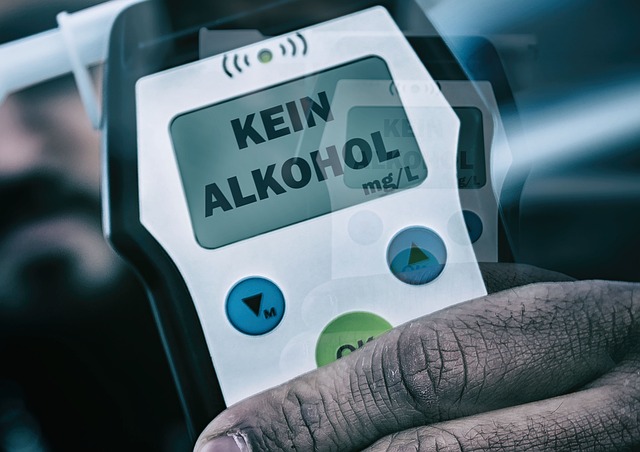Rural and urban areas face differing challenges in DUI enforcement due to demographics and resources. Urban centers enforce stricter rules with regular sobriety checks, while rural communities struggle with limited resources for patrols, leading to higher insurance rate adjustments post-DUI conviction. Rural residents face longer travel distances and fewer insurance competitors, impacting their premiums. Urban DUI convictions result in severe consequences like jail time and increased auto insurance premiums. Rural areas may receive more lenient sentences and unique defenses. Insurance rate adjustments vary significantly between regions based on regional risk assessments and market conditions. Technological advancements may eventually equalize these disparities.
In the vast landscape of legal disparities, rural and urban DUI laws stand as a notable divide. This article delves into the nuances of these differences, from insurance rate adjustments to potential consequences. We explore how DUI incidents are handled in diverse settings, focusing on the impact on drivers’ lives and wallets. Understanding these variations is crucial, especially when considering post-DUI insurance rate adjustments. Get ready to navigate through a complex web of legal and financial implications.
- Understanding Rural and Urban DUI Laws
- Insurance Rate Adjustments in Rural Areas
- Consequences of DUI in Urban Settings
- Legal Defenses: Rural vs Urban Differences
- Impact on Insurance Premiums: A Comparative Study
- Future Trends: Equality in DUI Enforcement
Understanding Rural and Urban DUI Laws

In the realm of driving under the influence (DUI) laws, rural and urban areas often find themselves governed by distinct regulations. This disparity is largely due to differences in demographics, traffic patterns, and community resources. In bustling urban centers, with their labyrinthine streets and high population density, DUI enforcement tends to be more stringent. Police forces are better resourced and equipped to handle the hustle and bustle of city life, enabling them to conduct regular sobriety checkpoints and increase patrols in areas known for high alcohol consumption.
Conversely, rural communities present unique challenges. With lower populations and sparser settlements, law enforcement may have limited resources and less frequent opportunities to conduct DUI patrols. As a result, insurance rate adjustments after DUI convictions might be more pronounced in urban areas due to the higher risk perceived by insurers. In contrast, rural residents might face different considerations, such as longer distances to courts and treatment centers, which can impact their overall legal experience following a DUI arrest.
Insurance Rate Adjustments in Rural Areas

In rural areas, where populations are often smaller and spread out, the impact of a DUI (drunk driving under influence) conviction can be more significant due to the nature of community dynamics. Insurance rate adjustments after DUI in these regions tend to be substantial, reflecting both the higher perceived risk and the relatively fewer options for insurance providers. This is in stark contrast to urban areas, where dense populations and a wide array of insurance companies can mitigate the financial consequences of such convictions.
The lack of competition among insurers in rural settings allows them to set rates based on local risk factors, including the frequency of DUI offenses within a community. As a result, individuals convicted of DUI may face much higher premiums, making it more challenging for them to maintain adequate coverage. This phenomenon underscores the need for residents in rural areas to be particularly diligent about understanding their insurance options and seeking out affordable alternatives following a DUI incident.
Consequences of DUI in Urban Settings

In urban settings, a Driving Under the Influence (DUI) conviction carries significant consequences. The penalties are often more severe due to higher population densities and stricter local laws. Additionally, the impact on an individual’s life can be profound, with potential jail time, heavy fines, and extended license suspensions. These repercussions can disrupt employment, affect personal relationships, and severely hinder daily routines.
One direct result of a DUI in urban areas is often insurance rate adjustments after DUI. Insurance companies consider urban environments as higher-risk due to the increased likelihood of accidents and the potential for more severe legal outcomes. As such, individuals convicted of DUI may face substantial increases in their auto insurance premiums, adding another layer of financial strain on top of existing penalties.
Legal Defenses: Rural vs Urban Differences

In rural areas, where communities are often smaller and more tightly knit, there may be a sense of mutual understanding during legal proceedings. This could potentially lead to more lenient sentences or a willingness to consider alternative defenses. For instance, an individual might argue that their behavior was a result of extenuating circumstances, such as needing to transport someone in an emergency, which could be more readily accepted in a rural setting. Additionally, the lack of heavy traffic and urban congestion could be used as a mitigating factor when presenting a legal defense.
In contrast, urban DUI laws often reflect denser populations and higher rates of alcohol-related incidents. As a result, defenses may need to be more creative or focused on technicalities. Urban defendants might emphasize the unreasonableness of traffic stops or challenge the admissibility of breathalyzer results due to potential calibration issues. Furthermore, insurance rate adjustments after DUI can vary significantly between rural and urban areas, with urban residents often facing steeper increases due to higher risk profiles.
Impact on Insurance Premiums: A Comparative Study

In the comparison of rural and urban DUI laws, a significant factor that often gets overlooked is the subsequent impact on insurance premiums. After a DUI conviction, individuals across both settings face heightened risks for substantial insurance rate adjustments. However, studies suggest these impacts might differ based on geographical location. In urban areas with higher population densities and more stringent law enforcement, the increase in insurance rates can be dramatic due to the elevated perception of risk by insurers. Conversely, rural regions, despite their own unique challenges regarding DUI enforcement, may experience more moderate rate hikes as a result of lower accident rates and distinct insurable risk profiles.
A close examination of insurance rate adjustments after DUI reveals nuanced patterns. Research indicates that while both rural and urban dwellers face higher premiums post-DUI conviction, the magnitude of these changes can vary significantly. This disparity is largely driven by varying insurance market conditions and regional risk assessments. Understanding these dynamics is crucial for individuals navigating the legal and financial consequences of driving under the influence in different geographical settings.
Future Trends: Equality in DUI Enforcement

As society continues to urbanize, the lines between rural and urban areas blur, leading to a need for uniform DUI enforcement practices across all landscapes. Currently, there’s a noticeable disparity in how these laws are implemented and enforced in rural versus urban settings. However, with increasing urbanization, future trends point towards a more equalized approach. This shift is likely driven by advancements in technology, data analytics, and the standardization of legal procedures.
For instance, as we move forward, insurance rate adjustments after DUI could become more consistent regardless of location. Data-driven models will play a significant role in setting fair premiums, ensuring that individuals facing DUI charges in both rural and urban areas face comparable consequences. This trend fosters a sense of equality, holding all drivers accountable for their actions while providing them with transparent and just insurance rate adjustments.
In conclusion, understanding the nuances of rural and urban DUI laws is crucial for both drivers and law enforcement. While each region faces unique challenges, such as insurance rate adjustments in rural areas and stricter consequences in urban settings, recognizing these differences empowers individuals to make informed decisions and advocates for more equitable DUI enforcement across all landscapes. By exploring legal defenses tailored to each setting, we can work towards a system that treats all drivers fairly, ensuring justice without exacerbating existing disparities.






